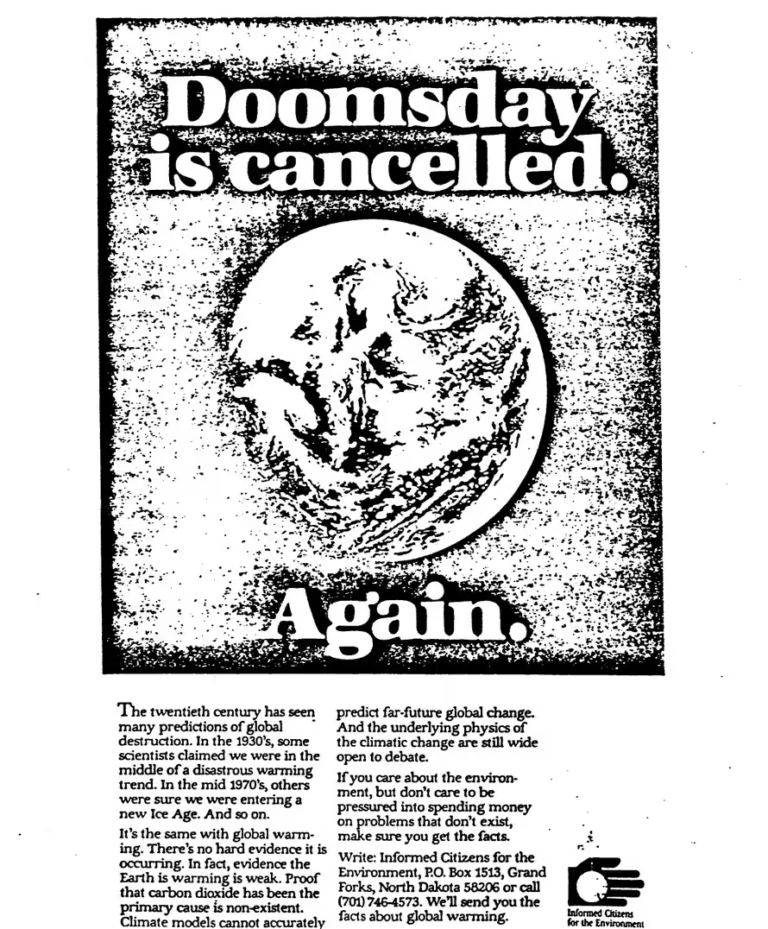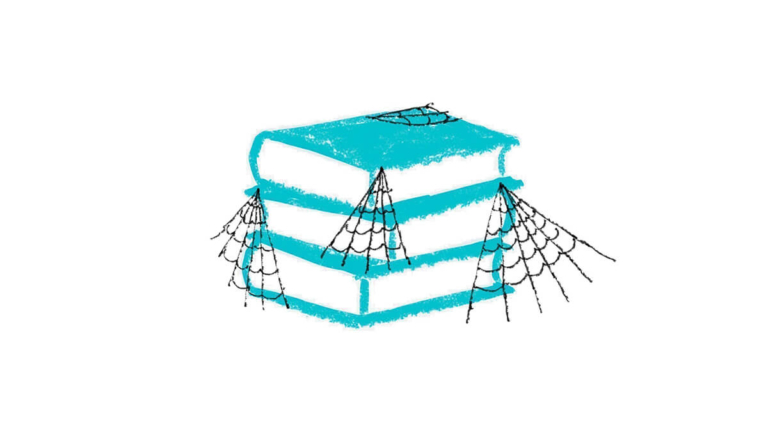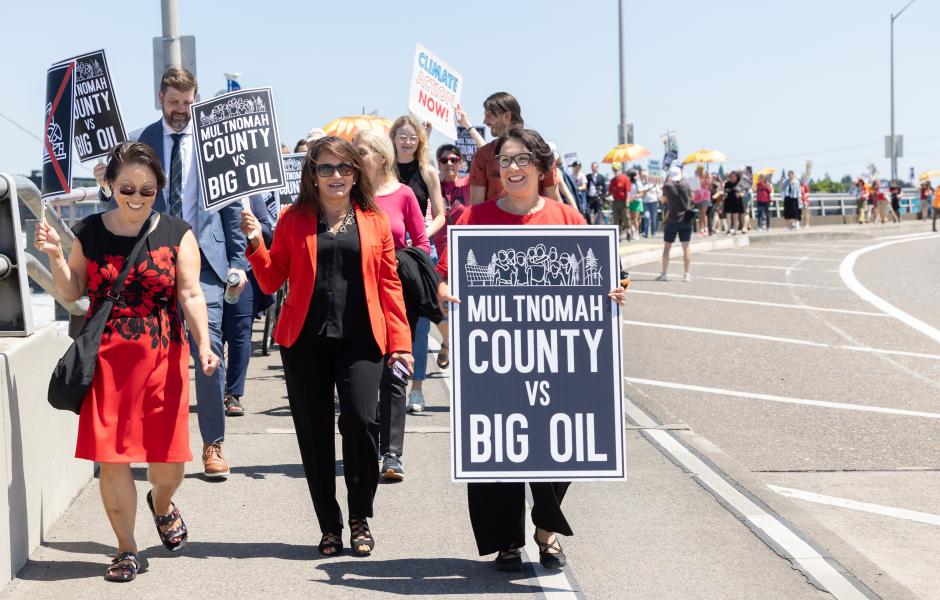Casebook Info
A county in Oregon demands compensation from the fossil fuel industry for past and future harms from climate change. The county alleges that major fossil fuel companies, along with their consultants and trade associations, deceived the public about the risks posed by fossil fuels while aggressively marketing those fuels.
- Year Filed 2023
- Year of Most Recent Ruling N/A
- Year of Final Ruling N/A
- Jurisdiction United States
- Court Name Circuit Court of Oregon
- Primary Focus Adaptation and Loss and Damage
- Ruling On N/A
- Plaintiff(s) Multnomah County
- Respondent(s) Major fossil fuel corporations
- Outcome N/A
- Organizational leader of the litigation N/A
- Link to the decision/ruling
Background
In June 2021, a “catastrophic” heatwave of “unprecedented magnitude” swept the Pacific Northwest region of the United States and Canada (White et al., 2023). Temperatures soared to 40°C–50°C (104°F–121°F), making it one of the most extreme events “ever recorded globally” (Thompson et al., 2022). Unsurprisingly, this event had “catastrophic” and wide-ranging impacts (White, p. 1). Estimates indicate that the heatwave killed at least 868 people, and hospitalized a great number more. The heatwave caused mass deaths of marine life and dramatically reduced crop yields. Id. Scientists also believe that the heatwave contributed to devastating wildfires (Jain et al., 2024). One such fire burned around 90% of the town of Lytton in British Columbia, Canada.
Multnomah County, the most populous county in the state of Oregon, was one of the many localities devastated by the 2021 heatwave. So, in 2023, the county sued major actors in the fossil fuel industry for the impacts it suffered from the heatwave and climate change more broadly. The county named major oil companies like Exxon Mobil, Chevron, and BP as defendants. Notably, the county also included the consulting firm McKinsey and two trade associations— the American Petroleum Institute and the Western States Petroleum Association— as defendants.
Suing on behalf of its citizens and as an impacted government, the county alleged that these defendants played an instrumental role in causing the climate crisis. According to the county’s complaint, the defendants executed a scheme to knowingly pollute the environment with fossil fuels while deceiving the public about the risks of this pollution. The county argues that this scheme led to substantial greenhouse gas (GHG) emissions and inaction on climate change, which, in turn, played a key role in causing the climate crisis and the 2021 heatwave.
Causing the Climate Crisis by Spreading Disinformation
To establish this claim, the complaint describes how the defendants led a multi-decade effort to spread disinformation about climate change. The defendant oil companies had direct knowledge of climate change since the 1950s, when they helped to fund studies on the effect of GHG emissions. Scientists warned the companies that climate change would have “globally catastrophic effects” (Complaint, ¶298). However, instead of warning consumers about the risks associated with fossil fuel products, the defendants instead coordinated to deceive the public about these risks.
The defendants covered up the studies they had funded and instead spread claims that GHG were harmless, or even good for the environment. They formed an international lobbying group called the Global Climate Coalition (“the GCC”), which funded and coordinated “a multi-year, multi-million-dollar, multi-organization misinformation campaign designed explicitly to undermine climate science and further their business interests” (¶340). The GCC funded ad campaigns, distributed misinformation, funded climate change denial organizations, and bankrolled fringe scientists who sowed doubt about the scientific consensus regarding anthropogenic climate change. In one of the more noteworthy examples of this effort, an industry-funded scientist distributed a climate denial “petition” signed by 17,000 “scientists.” The signatories were in fact “fictitious names, deceased persons, and celebrities” (¶404).

This disinformation campaign evolved over time. Around 2000, fossil fuel corporations withdrew from the Coalition and the group was restructured to only include trade associations. Some companies made public statements recognizing climate science, but their trade associations continued to fund climate change denial (¶415). The county argues that this was a disingenuous attempt to “sanitize” the industry’s image while covertly continuing the disinformation campaign. Indeed, as recently as 2017, an industry funded organization mailed books titled ““Why Scientists Disagree about Global Warming: The NIPCC Report on Scientific Consensus” to over 200,000 teachers (¶455).
The complaint alleges that the defendants succeeded in their effort to sow doubt and misinformation. By 2010, nearly half of Americans doubted or flat out disbelieved the consensus among climate scientists. This doubt undermined and diverted attention away from efforts to mitigate GHG emissions. It also “left the [Multnomah] community and its leadership unprepared for extreme heat events that Defendants’ products and deception then caused” (¶461).
In this way, the complaint points to three different ways the defendants caused or exacerbated the impacts of climate change: 1) they directly extracted and sold fossil fuels that are responsible for a large portion of the Earth’s GHG pollution; 2) they inhibited efforts to limit GHG pollution by deceiving people about climate change; and 3) they inhibited efforts to prepare for and adapt to climate change impacts by burying climate science and deceiving the public. Put together, these actions (if proven) make the defendants particularly responsible for the climate crisis.
Seeking Compensation for Damages from Climate Change
During the 2021 heatwave, 69 people died from overheating in Multnomah County. The complaint stresses how unusual this is: “[i]n a typical year, Multnomah County experiences zero deaths from heat-related illnesses . . . More people died from the June 2021 heat wave in Multnomah County than died from heat in the entire state of Oregon in the past 20 years” (¶2). The county spent considerable sums on emergency responses, such as setting up cooling shelters and emergency healthcare services. Drought, wildfires, and adapting to climate change have also drained the county’s resources. Overall, the complaint details many ways climate change has already impacted the county.
Crucially, the complaint cites several “attribution science” studies to show that climate change played a key role in causing the 2021 heatwave. Attribution science is an emerging area of climate science that measures how climate change impacted particular weather events or environmental trends. In this case, one study found that the 2021 heatwave was “virtually impossible” without anthropogenic climate change (¶221). This science helps the county attribute specific losses to the defendants.
Relying on traditional tort law, the county argues that the defendants should compensate it for past and future damages from climate change. Multnomah lays out four independent bases for their argument:
- Public nuisance (the defendants created a nuisance which unreasonably interferes with public rights, including health, safety, and the right to enjoyment of life and property, as well as the county’s finances and general welfare)
- Negligence (the defendants failed to act with reasonable care by extracting and selling fossil fuels, failing to warn the public about the risks posed by fossil fuels, concealing and undermining knowledge about these risks, and suppressing the development of fossil fuels)
- Fraud and deceit (the defendants engaged in fraud and deceit by pushing misinformation about climate change)
- Trespass (by substantially contributing to climate change, the defendants caused waters and airborne particulate, such as wildfire smoke, to invade the county’s property)
To remedy these violations, the county sets out a series of specific requests. First, the county asks the court to find the defendants liable for causing climate change. As of yet, no entity anywhere in the world has been found liable for climate change. Such a finding could entitle other climate impacted communities to compensation from the defendants. Second, the county asks for $50 million to cover past damages from climate change impacts, such as those caused by the 2021 heatwave. Third, the county asks the court to establish an “abatement fund” with at least $50 billion, which would cover the costs of adapting to climate change. And fourth, the county asks for $1.5 billion to cover future damages that the county will suffer before adaptation measures are able to successfully reduce or prevent climate change impacts.
The Long Fight Ahead
This case joins over two dozen similar lawsuits filed by U.S. states and local governments against major fossil fuel companies and their trade associations. Broadly, these cases demand compensation for climate change-induced harms and the costs of adapting to climate change. These cases have almost uniformly been filed in state courts, which are seen as being more favorable to climate litigation than the federal courts. For years, the industry defendants have tried to move the lawsuits to federal court through a procedure known as “federal removal.” But until now, the federal courts— including the U.S. Supreme Court— have rejected this move, opting to send the cases back to state court. However, this has not stopped the industry from trying new arguments and tactics for federal removal.
It will likely take years for Multnomah County to fight against federal removal and motions to dismiss. If the county manages to avoid dismissal, it will then get an opportunity to review the defendants’ internal documents for further evidence on their disinformation campaign. It is possible that this evidence will strengthen the county’s case, and it could eventually be released to the public. As this litigation progresses through the courts, climate change will continue to inflict its toll. It is also likely that the defendants will continue to extract and sell fossil fuels, deepening their contribution to the climate crisis.
- 92% of climate skeptical literature was funded by the fossil fuel industry (Hoggan, 2009).
- 63% of global emissions can be traced to just 90 fossil fuel and cement companies (Heede, 2014).
- $200 billion The combined profits of Exxon, Chevron, Shell, BP and TotalEnergies in 2022.
Strategies
Applying a developed body of law in the context of climate change

This case rests on long established tort principles. As Jeffrey Simon, one of the plaintiffs attorneys, put it, “[t]here are no new laws or novel theories being asserted here. We contend that the Defendants broke long-standing ones, and we will prove it to a jury.” While climate change presents new facts, the case presents itself as no different from a suit against a polluting neighbor.
Takeaways
Attribution science may help to prove particularized harm.
This case is notable for its use of attribution science. Many climate cases rely on trend attribution studies, which attribute specific environmental trends to climate change. For example, a plaintiff might cite studies that show climate change has made heatwaves more common. However, this case is one of only a few that also relies on event attribution, which examines the role of climate change in a specific event. Multnomah County cites multiple event attribution studies in its complaint, which will help the county prove that climate change caused specific damages to the county. The county also references source attribution, which examines the role of specific emission sources (e.g., Chevron) in causing climate change.
Causation has been a sticking point for climate change lawsuits, since it can be challenging to show that anthropogenic climate change— rather than natural variation— caused a plaintiff’s injury. In dismissing cases for lack of standing, some courts have held that the plaintiff was unable to prove that they face or faced a particular harm from climate change. An emerging body of event and source attribution science may help litigants overcome this challenge. These studies may also help litigants seek compensation for loss and damage caused by extreme weather. However, in doing so, cases citing attribution science may set a high evidentiary bar for plaintiffs.
While many actors have contributed to GHG emissions, certain fossil fuel corporations may bear particular responsibility for the climate crisis.
This case draws attention to the role that fossil fuel corporations played in causing the climate crisis. In particular, it emphasizes how the industry coordinated to spread disinformation about their products. The case reflects a growing call for corporations to pay for the ecological crisis they profited from.
Impacts
This case is still in its early stages, so its impact is still taking shape. This case, and others like it, are testing a new frontier in climate litigation: accountability for the devastating impacts of climate change. If successful, these cases could pave the way for other claims by impacted communities from across the world. This might provide an alternate pathway to the UNFCCC Loss and Damage Fund, which has only just begun to make progress after decades of opposition from wealthy, high emitter countries like the U.S.

